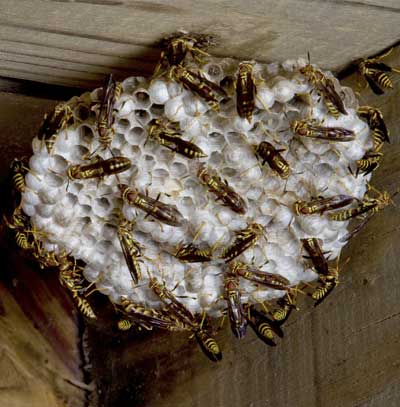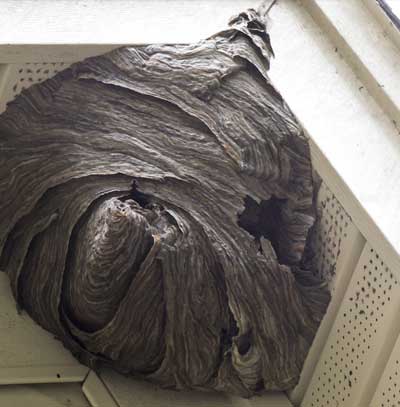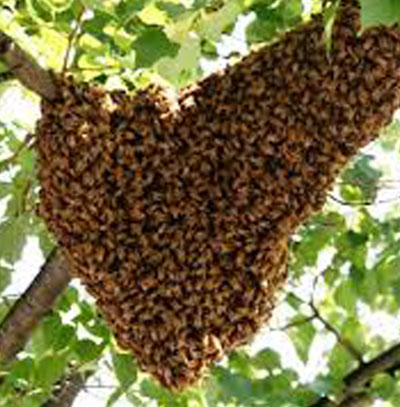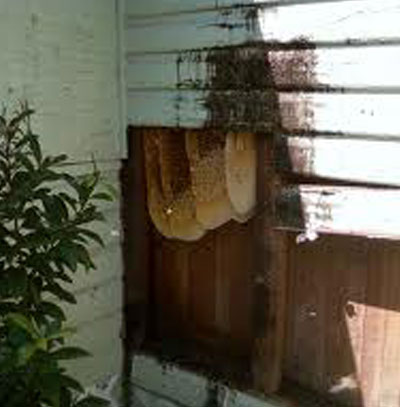Wasps, yellow jackets, & hornets in and around your home or business can threaten the safety and comfort of your family and employees. Critter Ridders recommends our guaranteed Bee, Ant, & Spider Exterior Prevention or Bee Prevention Program in the spring to prevent these stinging insects from building their nests on your home or business. If nests are already established under eaves, overhangs, around decks, and shutters, then Critter Ridders can help resolve the problem.
Click here to learn about our wasp, yellow jacket, and hornet service.
Click here to learn about our dead nest removal service.
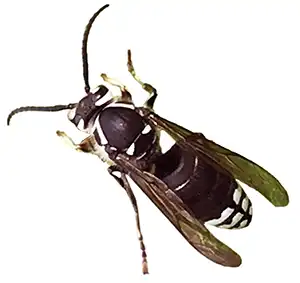 Bald Faced Hornets
Bald Faced Hornets
Bald faced hornets are very similar to yellow jackets but tend to be slightly bigger- being 3/4 of an inch long. They appear to be hairless with a wide head and thicker body. Bald faced hornets are black with white faces and tails. They build aerial nests made of chewed wood in areas out of the weather/rain. These nests appear to be paper-like and are gray in color. If provoked, they will sting. They can sting multiple times, and their stings can be very painful.
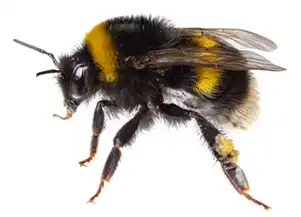 Bumble Bees
Bumble Bees
Bumble bees are similar in size to carpenter bees but are more robust and rounder. Most worker bees are 1/4 inch to 1 inch with a black body and yellow markings. Bumble bees are brighter yellow than carpenter bees. These pollinators appear hairy or fuzzy and are clumsy compared to other stinging insects. Bumble bees are not usually aggressive like yellow jackets & hornets but can be very intimidating by the buzzing sound they make as they fly. Bumble Bees are social insects that live in small colonies in the ground. They rarely build nests in structures but are very common around flowering plants and landscaping. They feed off nectar and pollen and are very beneficial to the environment. If they decide to build their nest in a high traffic area in your yard or landscaping, putting people at risk -then Critter Ridders can help eradicate them if necessary.
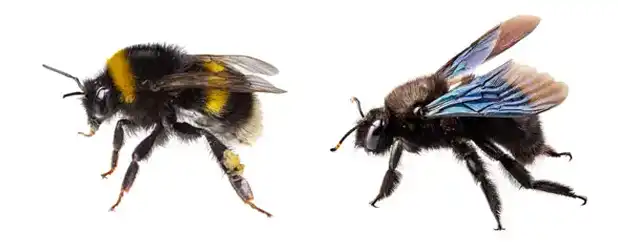
BUMBLE BEE VS CARPENTER BEE
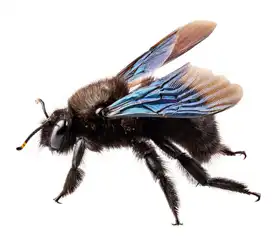
Carpenter Bees
In the late-spring and early summer, homeowners often notice robust, large, black bees hovering around the outside of their homes. These are probably carpenter bees searching for mates and favorable sites to construct their nests. Carpenter bees are flying insects with shiny, bare abdomens, often mistaken for bumble bees, that have hairy abdomens with at least some yellow markings. Adult carpenter bees can get up to 3/4-1 inch long. Female carpenter bees build their nest by burrowing 1/4 inch round holes into wood. If you see sawdust piles where there shouldn’t be, inspect the underside of any wood nearby. Male carpenter bees are territorial and are the protectors of their mate and offspring. Males can be very aggressive and may dive bomb or hover close to people near their nest. However, they do not have stingers and therefore cannot sting. Female carpenter bees can sting multiple times but rarely leave their nest.
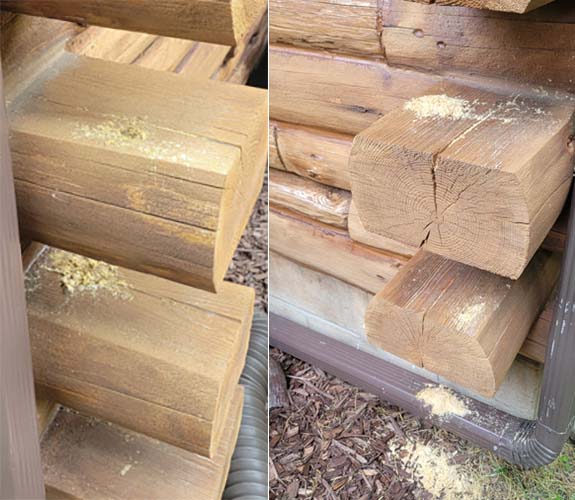
Click here to learn about our carpenter bee service.
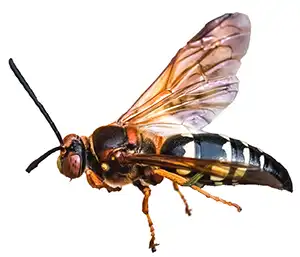 Cicada Killers
Cicada Killers
Cicada killers are large, solitary wasps often mistaken for European hornets. They are 2/3 to 2 inches in length with large brown wings. Cicada killers have small yellow faces with the remainder of their head being reddish-brown. Their thorax or middle part of their body is robust and orange to reddish-brown to black. Cicada’s rear segment is long and pointed with various color combinations ranging from the reddish-brown to black with light yellow or white markings or stripes. Cicada killers will dig tunnels in the ground to nest and lay their eggs. Since cicada killers are solitary wasps, they usually do not sting and are not aggressive. Female cicadas are the only ones that will sting if provoked. They get their name based off what they feed off of- cicadas. Cicada killers will sting their prey and pump them full of venom, paralyzing the cicada. If you are stung by a cicada killer, it may hurt but will not paralyze you. If you are allergic or have a reaction to the sting, please consult with your doctor.
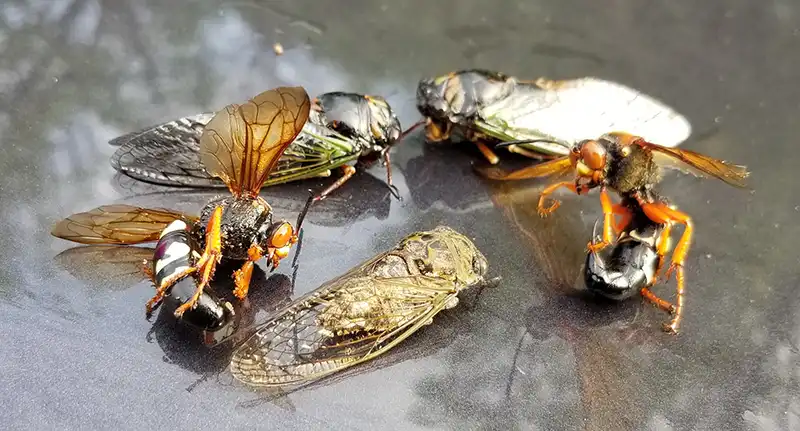
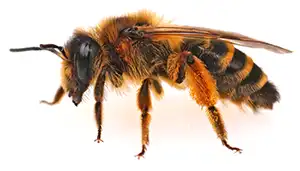 Digger Bees
Digger Bees
Digger bees are another type of solitary wasps. They are 1/4 of an inch to 1/2 inch long. Digger bees are hardy and come in a variety of colors ranging from white and yellow to a dark or metallic brown or black. They like to build their nests in dry, sandy, loose soil. Their nests will be in small mounds of soil and appear similar to an ant hill. Their nests have one entry point with side tunnels under ground. These pollinators can be beneficial to the environment but can also be a threat if they build their nests in your lawn or yard. Male digger bees do not sting. However, female digger bees will sting but are rarely aggressive unless provoked. Rely on Critter Ridders to exterminate your digger bees nests today.
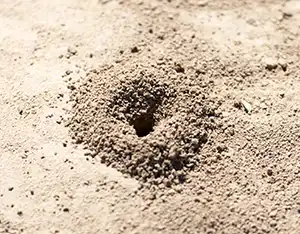
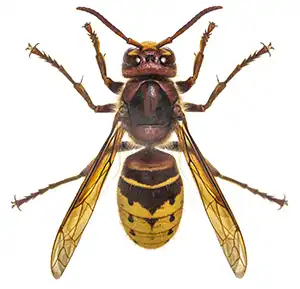 European Hornets
European Hornets
European hornets are one of the largest species. They are brown and yellow and can get up to 1 and 1/8 inch long. The queen will be the biggest hornet in the colony with her worker bees or drones being slightly smaller. The drones will gather food for their nest during the day and at night. European hornets like to build their nest in hollow trees or structures. They prefer to dwell in forests or woods but may still build a nest on man-made structures out of the elements. If an active nest is on your home or business, or in your yard, Critter Ridders can help eradicate the problem.
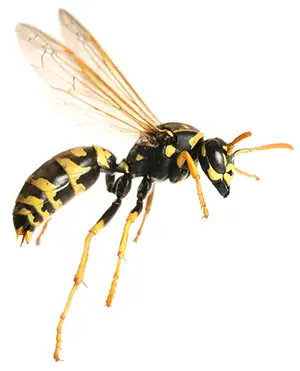 Ground Bees/Wasps
Ground Bees/Wasps
Ground bees/wasps like to build their nests in the ground in areas with little to no vegetation. Like other wasps they are bright in color and can range from 1/4 inch to an inch long. In the spring they will be less aggressive because their colony is smaller and there is more food to go around. Later in the year around August and September they will be more aggressive because food is scarce, and the colony is larger in size. They will also become aggressive when their nest is disturbed. Landscaping or mowing can aggravate or disturb a nest. Ground bees’ nests are usually one to two holes between 1/4 and 1/2 inches wide. If you are unable to solve the problem- Critter Ridders can help! Hire a professional today.
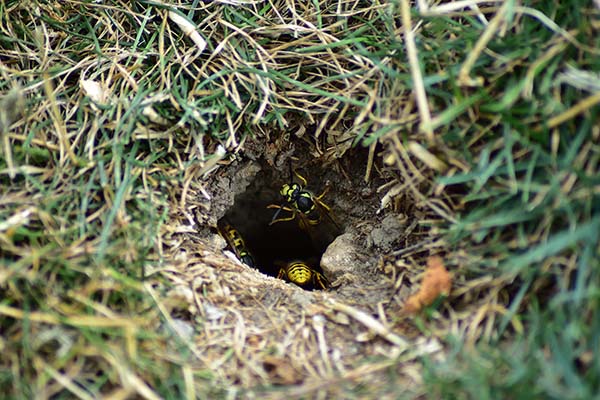
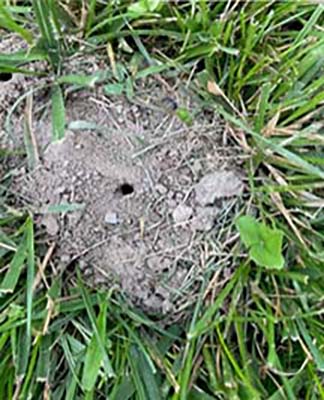
Honeybees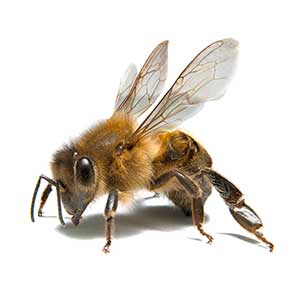
Honeybees are very beneficial to the environment and a crucial part of pollinating agricultural crops & balancing our ecosystem. The worker bees are small, round, and golden and are about a 1/2 inch long. Drone bees are a little larger and queen bees can get up to a 2 inches. Honeybees are often seen in swarms emigrating from their current colony to a new colony. They are not aggressive and will only sting if they feel threatened. Although these pollinators are beneficial to the environment, they can be destructive to your home or business if they decide to build their honeycomb-hive there.
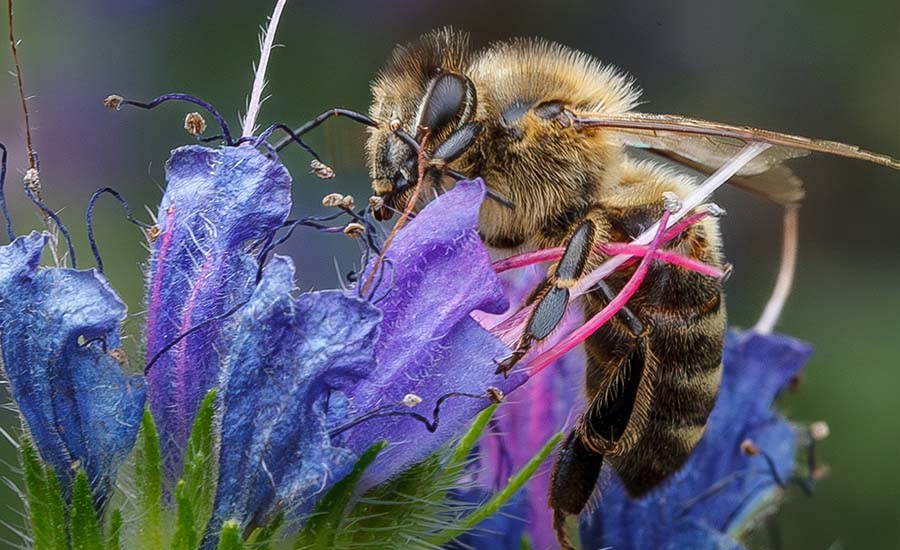
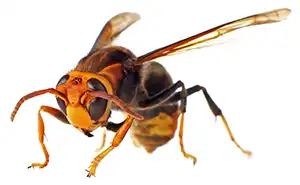 Hornets
Hornets
Hornets have wide heads with thick bodies compared to wasps. They are significantly larger than wasps and can be 1 1/2 inches to a little over 2 inches in length. Their colors and markings mainly depend on what species they are. They vary from yellow, black, brown, or even a darker red and have alternating colors on their bodies. Hornets will build paper-like nests out of chewed wood with one entrance. They are very territorial and will sting if they feel like their nest is being threatened. If an active paper nest is on your home or business, Critter Ridders can help eradicate the problem.
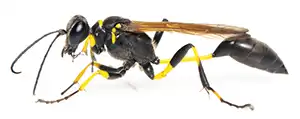 Mud Dauber Wasps
Mud Dauber Wasps
Like other wasps, mud daubers can vary in color. They can be black with yellow markings, all black, or a metallic bluish-black color. They have little to no waist and are 3/4 inch to an inch long. As their name indicates, mud dauber wasps build their nests out of mud. They are usually not aggressive and will only sting if they feel threatened. Critter Ridders recommends our guaranteed Bee, Ant, & Spider Exterior Prevention or Bee Prevention Program in the spring to prevent these flying masons from building their nests on your home or business.
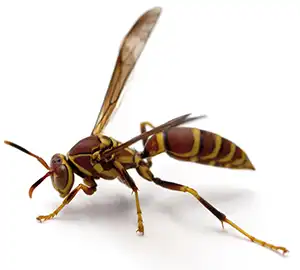 Wasps
Wasps
There are various species of wasps that come in many different colors and sizes. They can range from 1/4 inch to an inch long and have two pairs of wings. The one thing that they all have in common is their very narrow waists connecting their head and body. Wasps are bright in color and have little to no hair on them. Some wasps create nests in the ground, whereas others create paper like nests, made of chewed wood in areas out of the weather/rain. Wasps usually are not aggressive. However, if they feel threatened, they will become territorial and sting. Can’t solve your wasp problem? Hire Critter Ridders to prevent the problem or solve the problem.
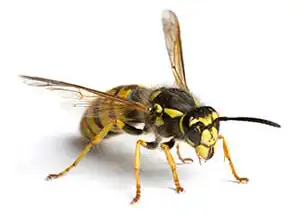 Yellow Jackets
Yellow Jackets
Yellow jackets are predatory wasps and can be aggressive when their homes are disturbed. They are bold and bright yellow with black throughout their bodies, and completely black antennas. They are about a 1/2 inch long and appear to be hairless. Yellow jackets are social wasps and will build their nests in the ground or in other areas out of rain. The queen bee will pick her nesting site in the spring. If an active paper nest is on your home or business or if there is an active nest in the ground, Critter Ridders can help eradicate the problem.
Pest Info

